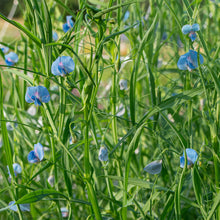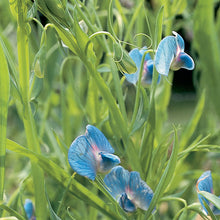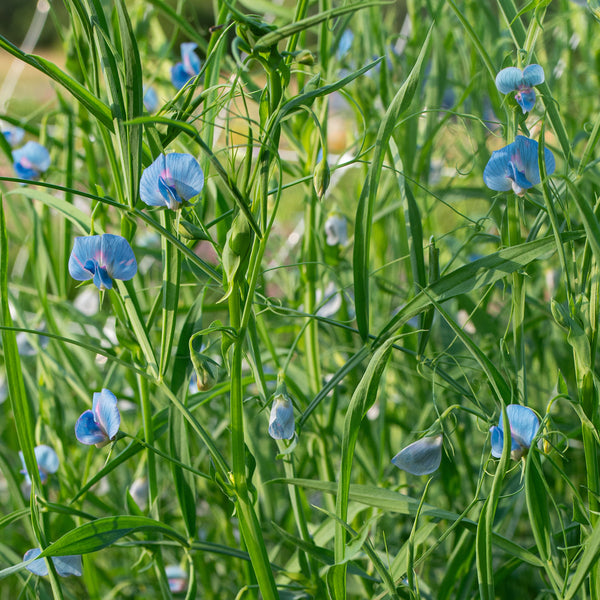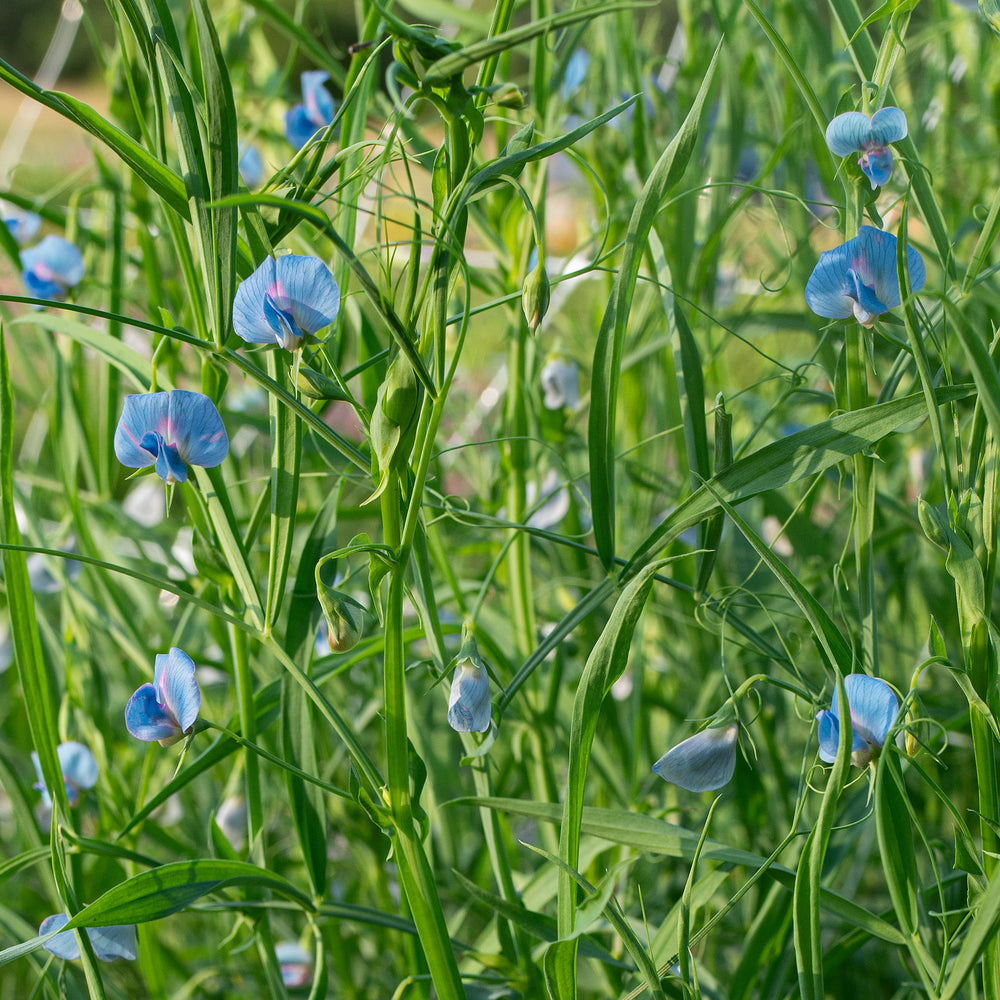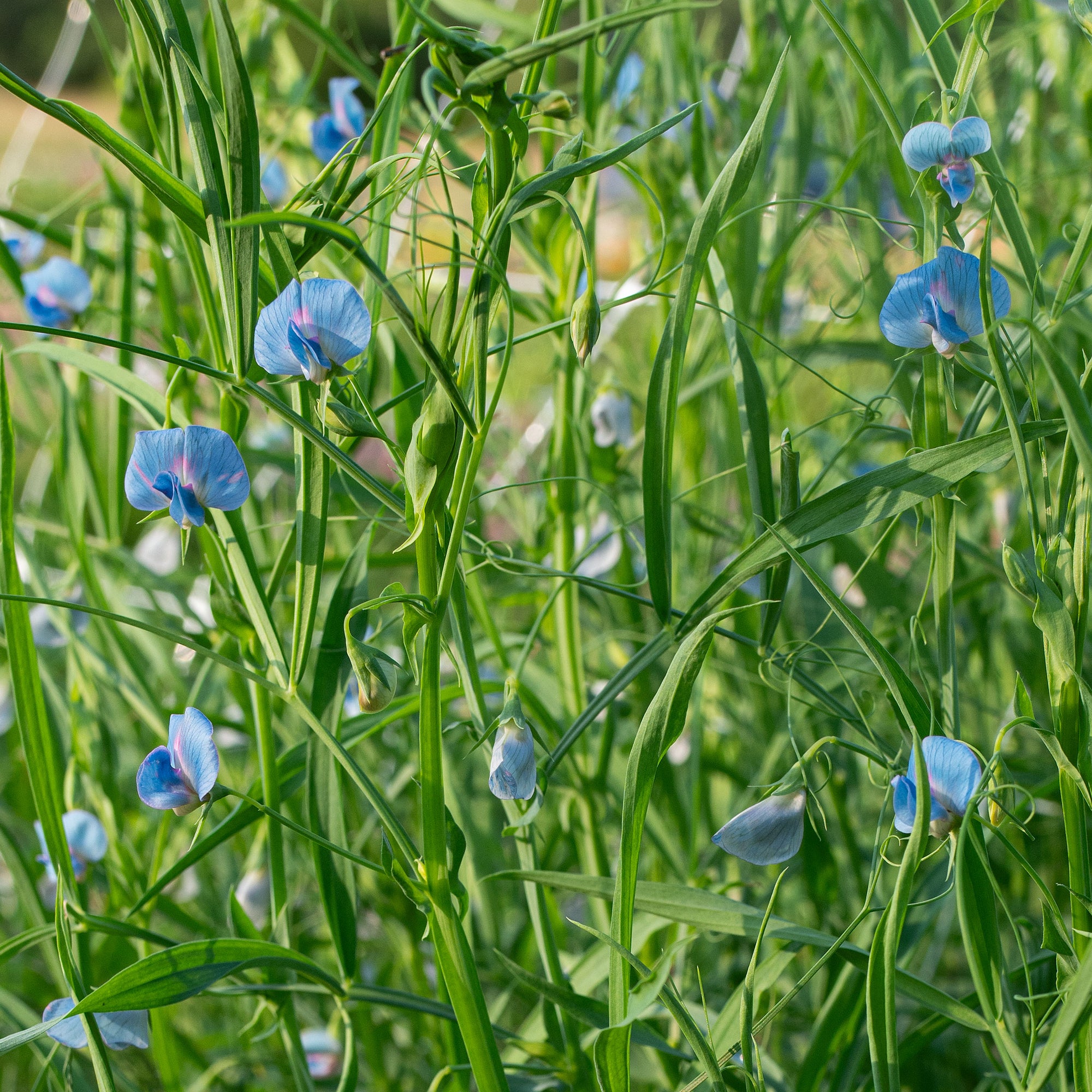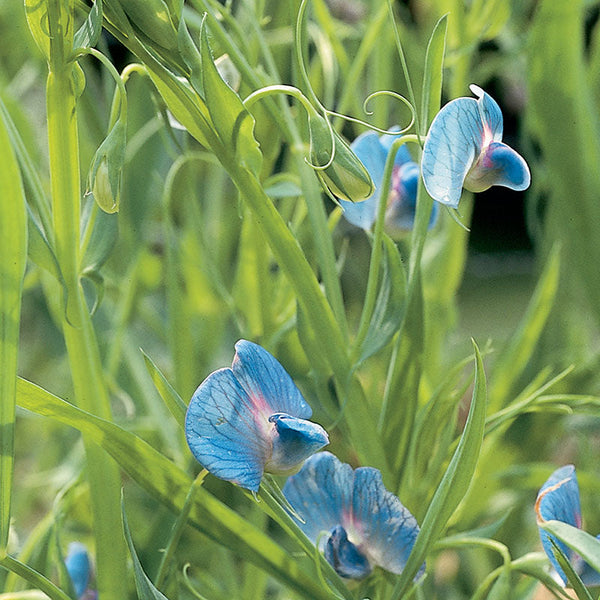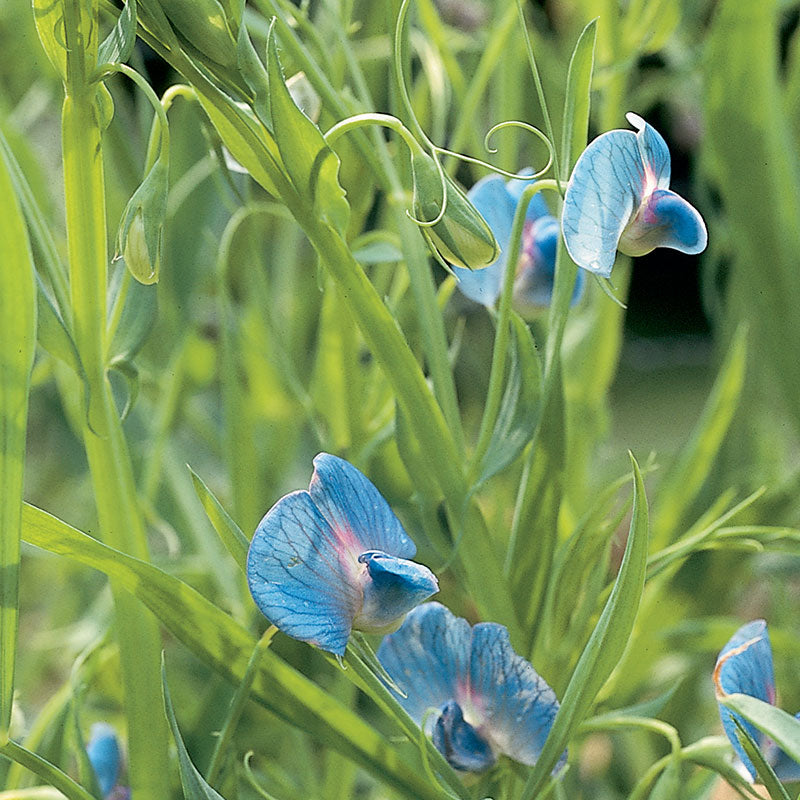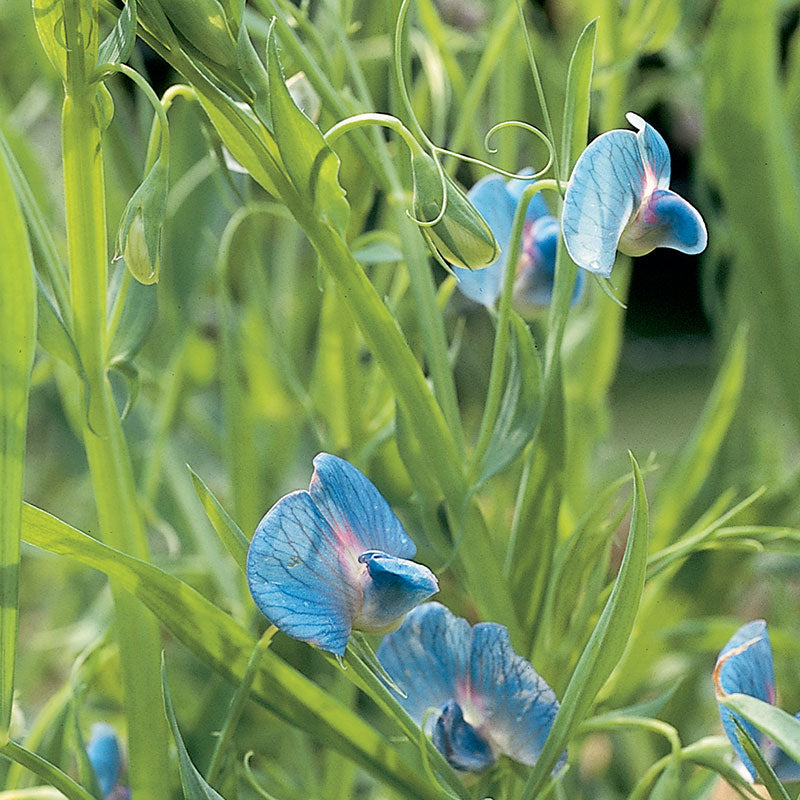SOWING INSTRUCTIONS
Depth:
1/2-1" Tip: Soil inoculant for peas can be utilized but not essential.
Seed To Bloom:
10-12 weeks
Starting Indoors:
Sow indoors in pots 4-6 weeks before planting out into cool soil. Keep at 55-65°F.
Starting Outdoors:
Sow in desired location 2 weeks before last frost in springtime when the soil still has a chill to it. In warmer climates (zone 9+) sowing in late autumn provides blooms for winter.
PLACEMENT & CULTIVATION
Grass Pea or chickling pea has a dark side, for within these seeds lies a neurotoxin that, if consumed in large amounts, will cause partial paralysis. Cultivated for centuries, for food in some cultures and ornament in others, it clothes obelisks and readily climbs trellises. Versatile, it can grow in cold or heat, wet or dry soils, in containers or garden beds. Deadhead to prolong flowering, as any seed-setting will signal the plant to cease blooming.
Watering Details:
Keep fairly moist—at least 1" per week, more during particularly dry spells.
Fertilizer:
Add about 3-4" or more of compost and aged manure and incorporate it into the soil in the fall before spring planting. Add lime or wood ash if the soil is acidic. Avoid nitrogen rich fertilizers, a high potash kelp based organic fertilizer or rose fertilizer is best.
Diseases & Pests:
Aphids may be an issue—hose down plants with a heavy stream of water regularly until the pest is gone. If slugs or snails appear, treat surrounding soil with pelletized iron phosphate, crushed eggshells, or diatomaceous earth.
When to Cut for Bouquets:
Cut when 1/2 of flowers on a stem are open.






























